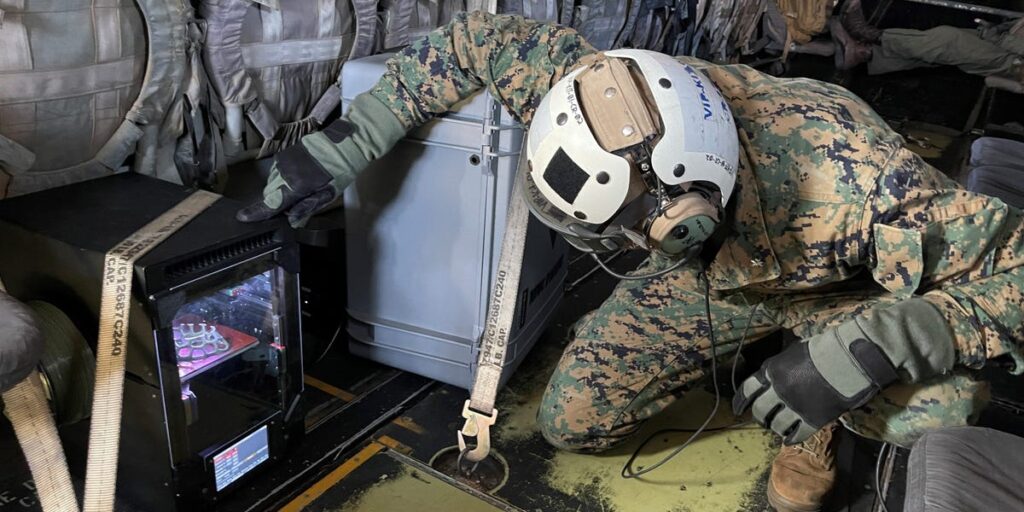Front-line forces in future wars may find themselves toting around a new piece of equipment along with their weaponry. That could be 3D printers for fixing things when help can’t get there.
“The force of the future will fix on the spot,” Chairman of the Joint Chiefs Gen. Dan Caine said on Tuesday during a congressional hearing on military spending.
Caine was responding to a lawmaker’s observations on aircraft cannibalization, a maintenance term used to describe the less-than-ideal process of harvesting parts from certain items to fix others — that could include aircraft, but it can also be done for smaller items like generators and trucks.
To avoid cannibalizing precious equipment, troops will “need to be able to have the parts right there,” Caine said, referring to the front lines of a future war. On a forward edge, troops are unlikely to have easy access to logistics hubs with extensive maintenance capabilities. US forces relied heavily on such hubs during the Global War on Terror, but a major conflict against a great power could be a very different situation.
Whether the US can “sustain our force out there at the edge,” is sure to be a complex command and control problem, Caine said, adding that adequately stockpiling of repair parts is also of concern.
The US military has been experimenting with 3D printers for years now and recently opened two barracks sites at Fort Bliss, Texas using concrete-based printers. But leaders already know that possible conflict in the Pacific is likely to be based along the vast island chains, posing colossal logistics challenges with far distances, rocky island terrain, and hot weather— elements that experts have assessed will impact whether the force can sustain and survive battle.
“I’m really encouraged by the innovation that’s happening to look at things like additive manufacturing, where we get a hold of the specs from companies like Lockheed and others,” Caine said, “and can just 3D print right on the spot the requirement,” referring to the technical specifications required to ensure a 3D printer is creating correct items of sufficient quality, information often closely guarded by companies protective of their intellectual property.
In other parts of the world, 3D printing has already arrived near battlefields out of necessity and without the bureaucratic red tape of the American military-industrial complex. Rebel fighters in Myanmar have relied on 3D printers to manufacture weapons parts. Ukrainians have used printers to manufacture parts for “candy bombs.”
Defense companies in the US are taking note, but many items still take days to print, a timeframe not likely to work well on the battlefield.
In hopes of getting ahead of logistics nightmares during potential conflict in the Pacific, the DoD is seeking innovative logistics solutions that could, in addition to tech like 3D printing, include augmented reality goggles to help troops who aren’t technical experts make critical repairs when needed.
How helpful such tech could be on future battlefields is likely to hinge on whether machines can print repair parts fast and if they’re easy to move. If not, cumbersome gear might just be abandoned for simpler solutions.
Read the full article here


